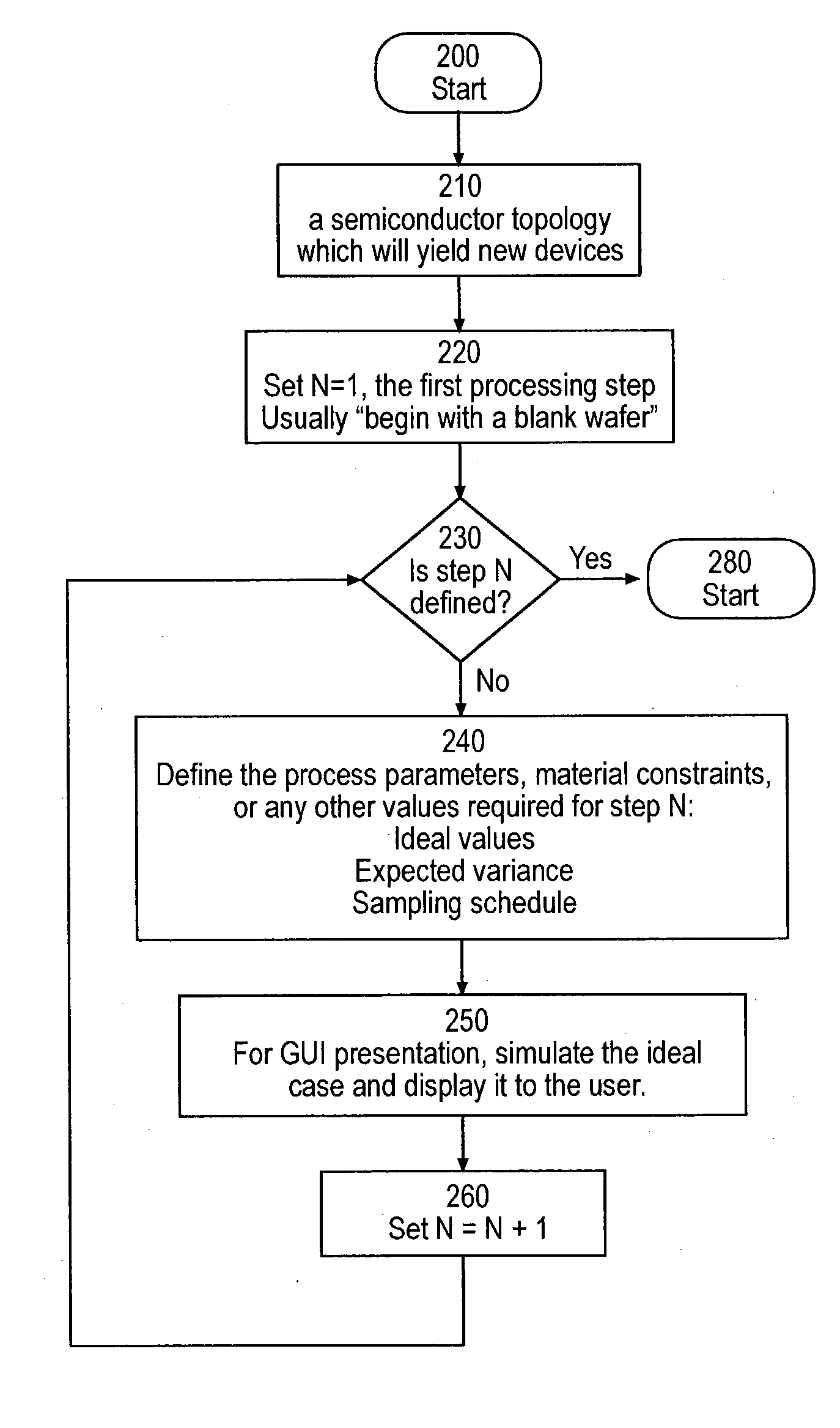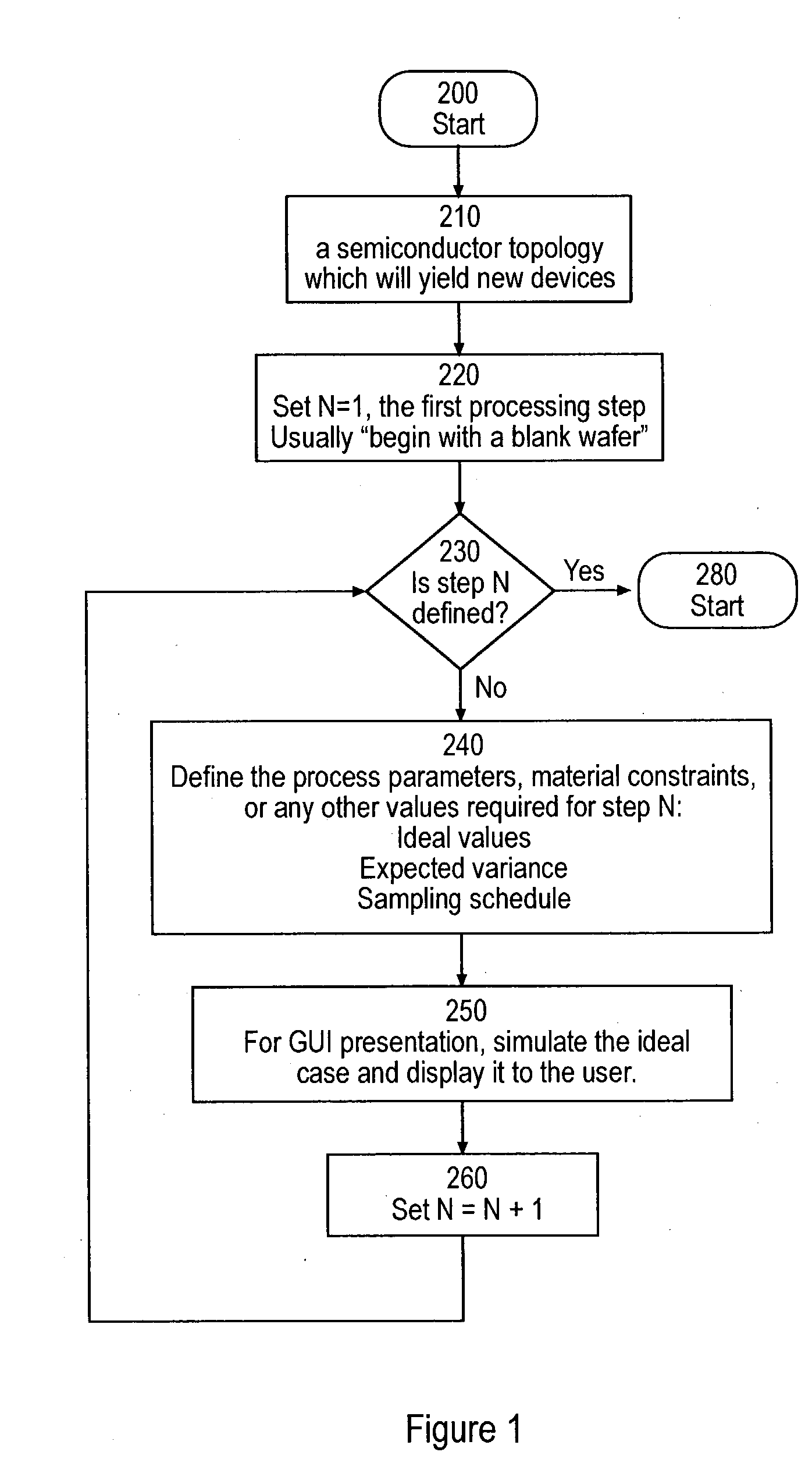Model pattern simulation of semiconductor wafer processing steps
- Summary
- Abstract
- Description
- Claims
- Application Information
AI Technical Summary
Benefits of technology
Problems solved by technology
Method used
Image
Examples
Embodiment Construction
)
[0051] The invention provides systems and methods for generating model patterns and model pattern libraries together with derived model signals and model signal libraries, wherein the method of developing model patterns is based on the actual processes which a semiconductor wafer undergoes. These systems and methods present a number of advantages. In one embodiment, any pattern which can be produced can be modeled, limited only by the process model. Thus the ability to "draft" or otherwise specify a completed pattern is not required. New model patterns are generated via adjustments similar to those of the actual wafer fabrication process. Patterns only need to be drawn for the lithography step. If the pattern is generated using current techniques, then fewer primitive shapes are required. In general, lithography pattern data necessarily exists, and is required for the lithography mask. The mask data can be used in a process of automatically generating the pattern. Process engineers...
PUM
 Login to View More
Login to View More Abstract
Description
Claims
Application Information
 Login to View More
Login to View More - R&D
- Intellectual Property
- Life Sciences
- Materials
- Tech Scout
- Unparalleled Data Quality
- Higher Quality Content
- 60% Fewer Hallucinations
Browse by: Latest US Patents, China's latest patents, Technical Efficacy Thesaurus, Application Domain, Technology Topic, Popular Technical Reports.
© 2025 PatSnap. All rights reserved.Legal|Privacy policy|Modern Slavery Act Transparency Statement|Sitemap|About US| Contact US: help@patsnap.com



